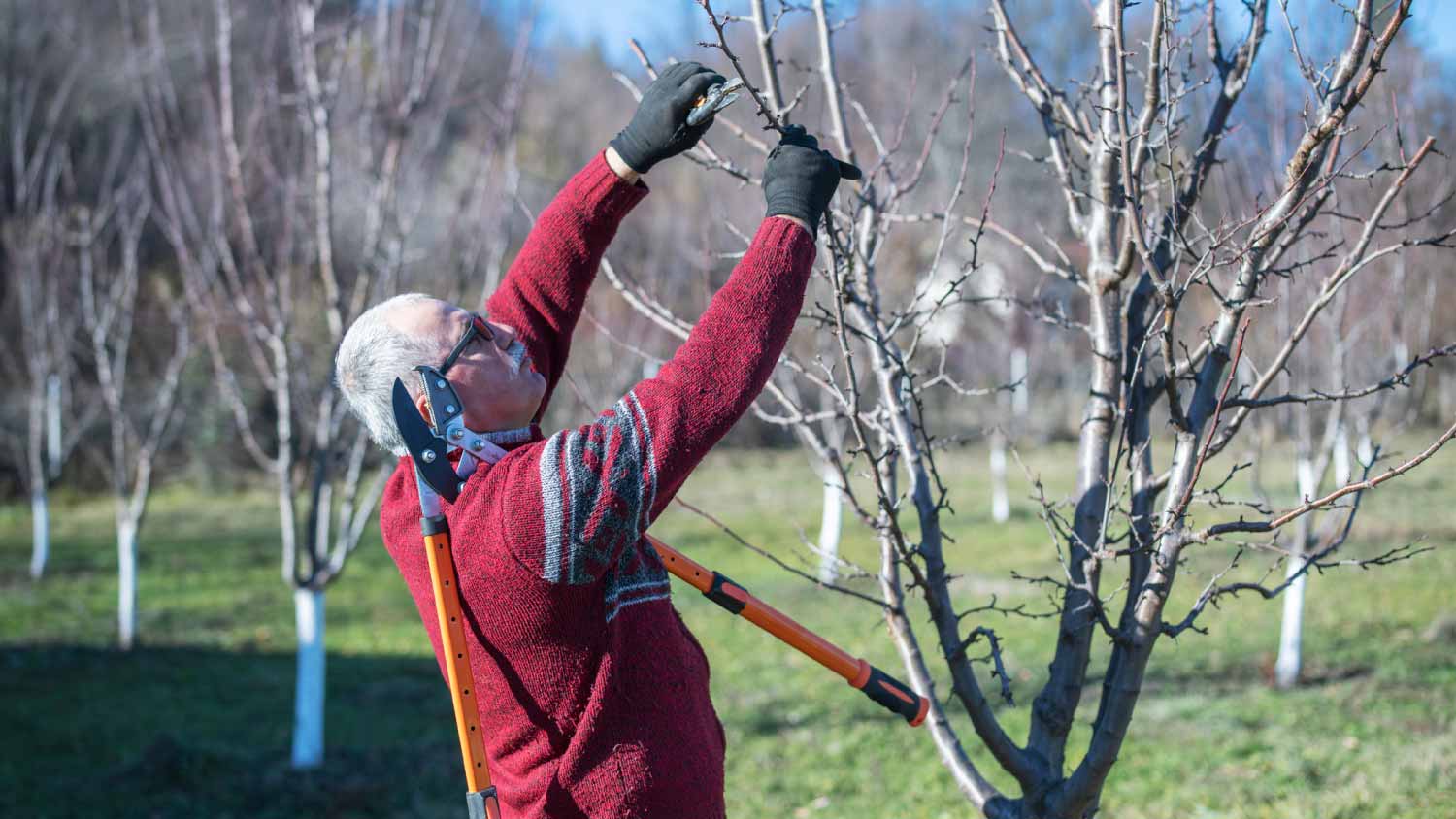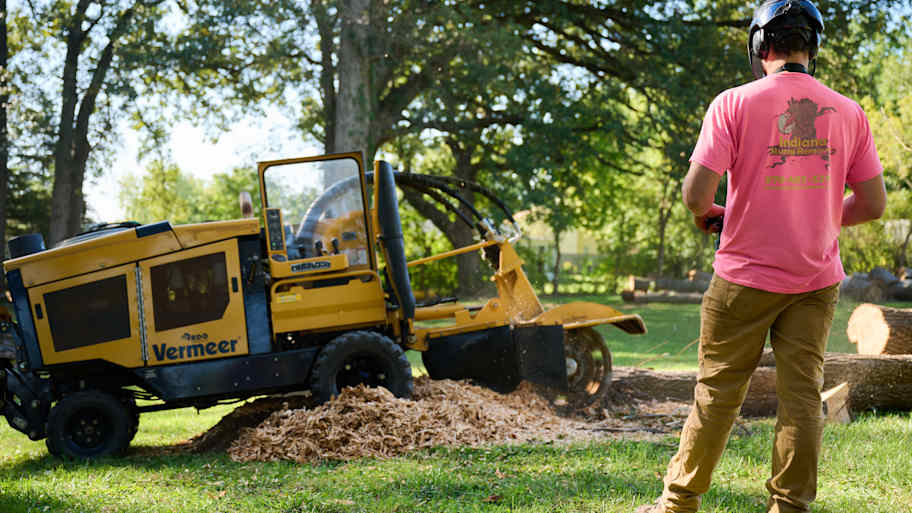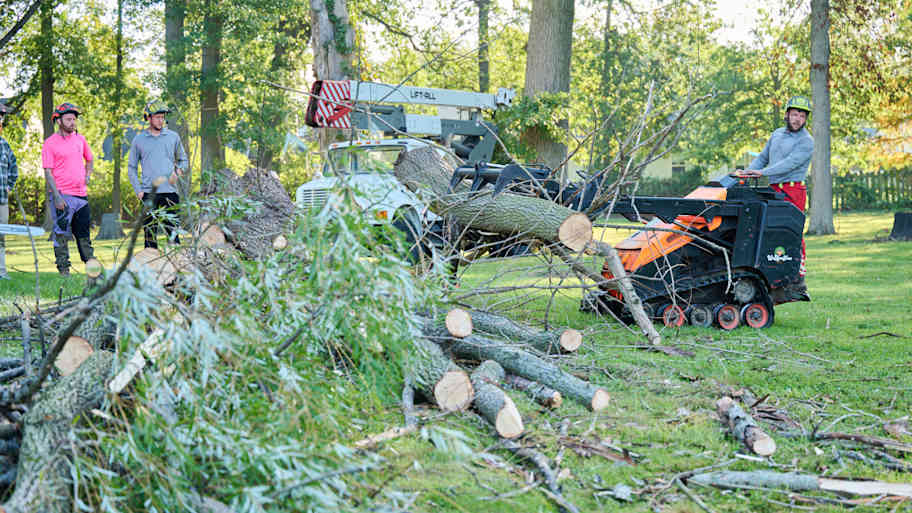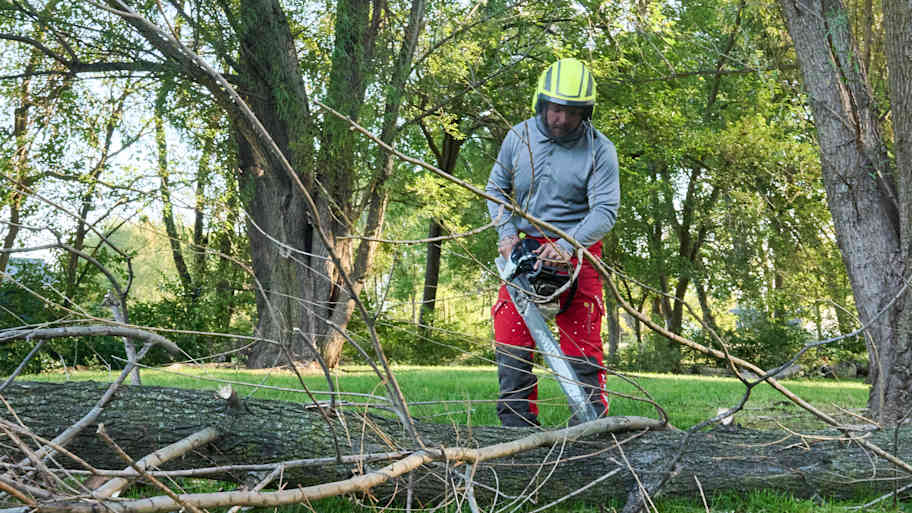Will a Topped Tree Grow Back?
You can help it recover from a hack job


Tree topping is an outdated practice that can harm or kill a tree.
Proper watering and nutrients are key to a topped tree’s survival.
Crown reduction is a healthier option for trimming a tree.
Careful pruning through the years can help control a tree’s height to avoid drastic cutting measures.
Topping trees was once a standard practice to control tree growth, but it's now widely discouraged. Experts say topping harms tree health and can lead to weak, unsightly regrowth. Despite this, some local governments and property owners still practice it. If a tree has been topped, it may recover, but the growth will likely be irregular and unsightly—here's what to expect and how to support its recovery.
What Is Tree Topping?
Topping a tree refers to cutting off major branches at a tree’s top, or “crown,” leaving it with a bare, flat appearance and branches chopped at about the same height. This practice was a common way to control height or clear space near structures and power lines, but it is now considered harmful and largely outdated.
This method is different from proper pruning, like crown reduction, which trims specific branches to support the tree’s health without removing large sections. Pruning cuts off wayward branches, removes dead growth, and helps a tree thrive.
Does Topping a Tree Kill It?
Unfortunately, topping a tree can kill it. Topping a tree removes a large portion of the canopy, which drastically reduces the tree's ability to produce food through photosynthesis. The sudden loss of foliage stresses the tree, triggering weak, fast-growing shoots that are prone to breakage.
Topping also causes large open wounds that don't heal well, making the tree vulnerable to decay, disease, and insect infestations. Over time, this combination of stress and damage can lead to the tree's decline and eventual death, especially if it's unhealthy.
Is Topping a Tree Bad For the Tree?

Topping trees creates several big problems for the tree and isn’t very good at accomplishing its purpose, which is why topping is generally discouraged these days. A topped tree faces major challenges, notably:
Topping a tree creates large wounds in the trunk and branches which take a long time to heal compared to normal pruning. These provide easy access for fungal diseases and insects, which can quickly sicken and eventually kill a tree.
Topping during rainy or snowy weather can cause rotting that can quickly spread down the trunk.
Topping a tree typically removes extraneous branches, which makes it difficult for the tree to grow back leaves. Trees need leaves to produce enough energy to survive. Until a topped tree can recover, it faces a starvation phase that weakens it and also makes it more susceptible to disease.
In hot areas, a topped tree has lost all protection against the sunlight. More delicate trees can scorch or wither as a result.
Topped trees trying to recover will send out small shoots and young stems. These stems are more vulnerable to breaking during storms, and if they’re low enough, they can be tasty snacks for nearby wildlife. This can make it difficult for trees to grow back.
Topped trees become more top-heavy as they regrow. This makes it more likely that the tree will fall when faced with strong winds or heavy snow.
An arborist or other local tree maintenance expert can help you determine if a topped tree can be saved. But not all trees will survive topping. Signs the tree is dying include shoots that grow back weak, new leaves that quickly yellow or wilt, or new growth on only one portion of the tree. This may indicate the tree is being overtaken by rot, disease, or pests, in which case you may need to remove it to prevent a falling hazard. Tree removal costs an average of $750, although companies often charge by the foot.
Will Topped Trees Grow Back?
If a topped tree has access to enough water and nutrients and is relatively healthy, it will often grow back. In fact, topped trees can grow back very fast as a response to the damage they faced.
Trees accomplish this with specialized buds called epicormic buds, which lie in wait under the bark in case the tree experiences a traumatic event (like wildfires—or in this case, topping) and needs to grow back quickly. The new shoots the tree creates are epicormic shoots, more commonly known as “water sprouts” or sometimes “suckers.”
This growth can be erratic and unpredictable at first, causing the tree to grow in strange new ways. It can lead to a deformed look—another reason to avoid topping—and could cause the tree to start growing toward rooftops or power lines, requiring additional pruning.
Some tree species don’t have epicormic buds, notably conifers. Therefore, pines, spruces, firs, and similar species may not be able to recover from topping.
How to Care For a Topped Tree
If you have a tree that’s already been topped, there are several important steps you can take to help the tree survive and recover.
Keep the tree well-watered. It needs plenty of water to start regrowing. Clear away any weeds from the base of the tree, and do what you can to ensure it has access to plentiful sunlight. You can also provide the tree with fertilizer, although it’s not always necessary. This is an excellent time to call in a professional arborist for advice.
Avoid any pruning for about a year. You want to give the tree’s water sprouts plenty of time to grow and develop. The tree is going to look pretty weird during this period, but resist the urge to prune. You’ll want a full cycle of growth before moving on to the next step. For trees low to the ground, you may want to consider fencing around the tree to protect the new shoots from deer and other hungry critters.
Check for leaders. After enough time, the water sprouts will grow to about the previous height of the tree. Certain sprouts will then start to strengthen and expand. These are called “leaders,” and they’ll be the new primary branches of the tree. Leaders will be significantly taller than other sprouts, and they should be free of damage and disease. Once leaders start to develop, you can begin pruning the smallest, weakest water sprouts in order to begin shaping the tree.
Be patient. You’ll need to carefully guide the tree’s growth until it’s firmly re-established. Expect it to take several years before the tree has many healthy new branches and enough leaves that the previous topping damage becomes difficult to notice.
Your local government is usually in charge of pruning trees on public property, and the power company is responsible for trees near power lines (even if they’re on your property). Whether or not they top these trees depends on their approach to pruning. You won’t be able to do much to control this, but you can contact them to find out more about their pruning process.
You can find pruning paints and sealants for trees, but you shouldn’t use them on a topped tree. Coatings like these often inhibit the tree’s healing process. An important exception is if there are dangerous fungi nearby that the tree is particularly vulnerable to, like oaks and oak wilt. Sealing cuts can help prevent fungi from taking root.
The best way is to start controlling tree height long before it grows too large, via careful pruning through the years. But that’s not always possible. If a tree has become too high or too large, use selective pruning to remove the most troublesome branches, one by one, without topping the tree. Gently shaping a tree like this can, over time, correct problems. You can also find growth inhibitors to spray on a tree to stop it from growing too rapidly, but use these sparingly if at all.
A light layer of mulch can help protect a tree, retain moisture, and keep the soil healthy. However, it’s important to avoid over-mulching or piling the mulch up around the trunk of a tree, a practice notoriously called “volcano mulching.” That piled mulch can increase the chances of rot and disease on the tree trunk as well as overwhelming the soil, which needs access to a certain amount of air. Topped trees have it hard enough: mulch sparingly while they heal.















